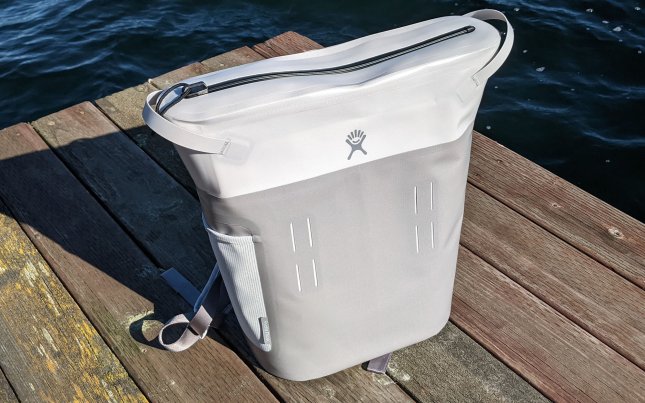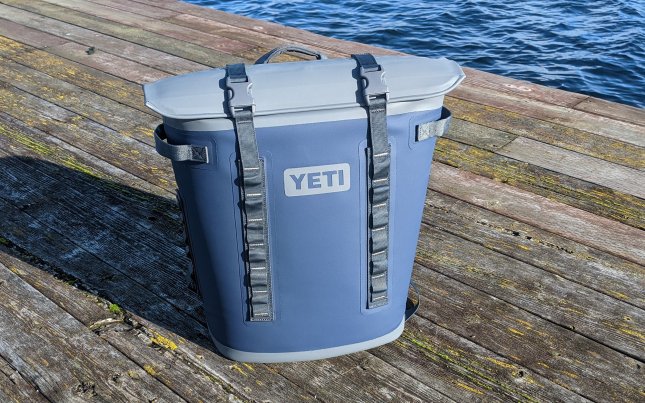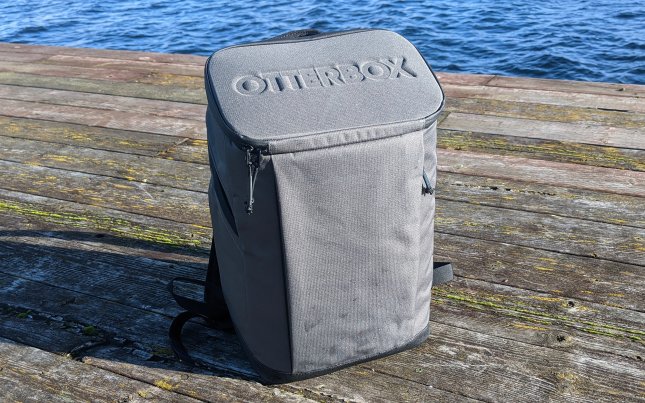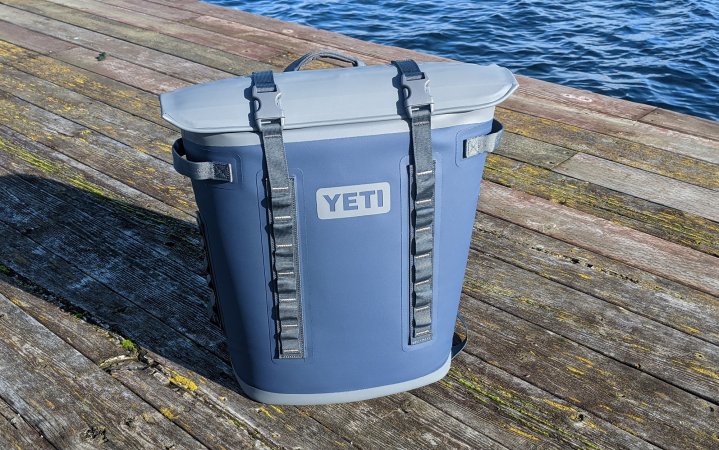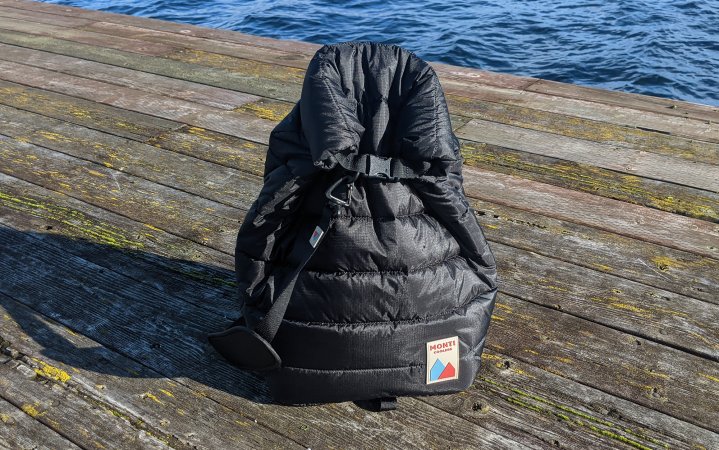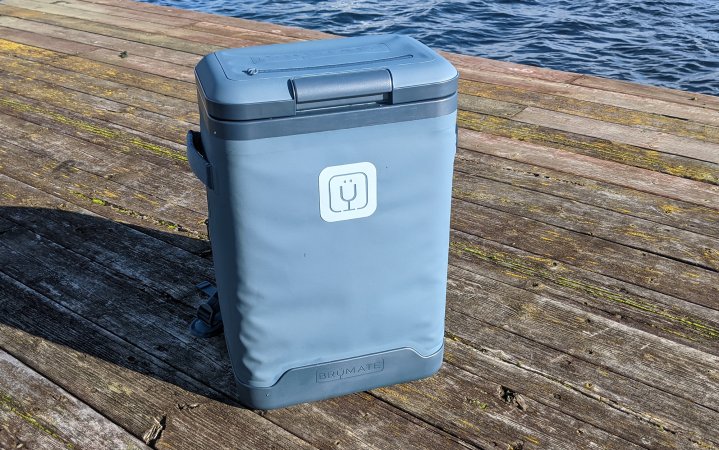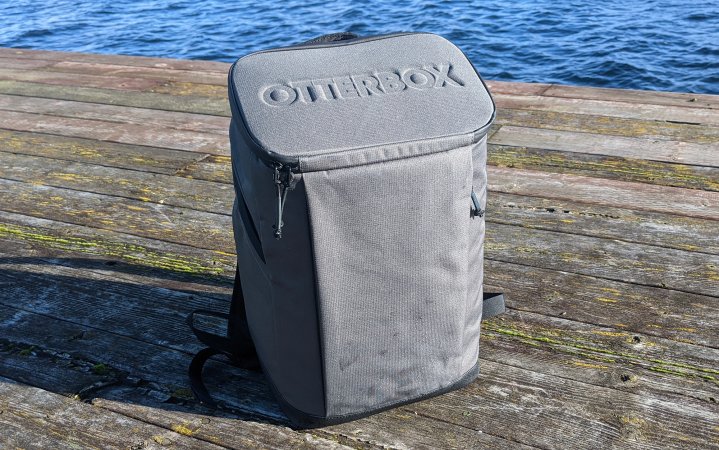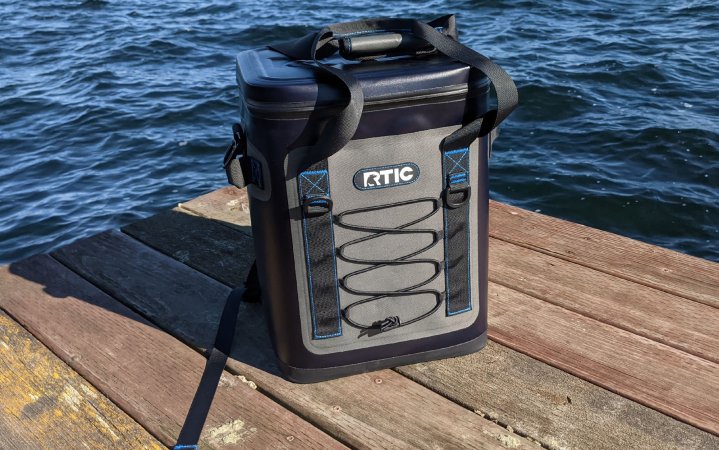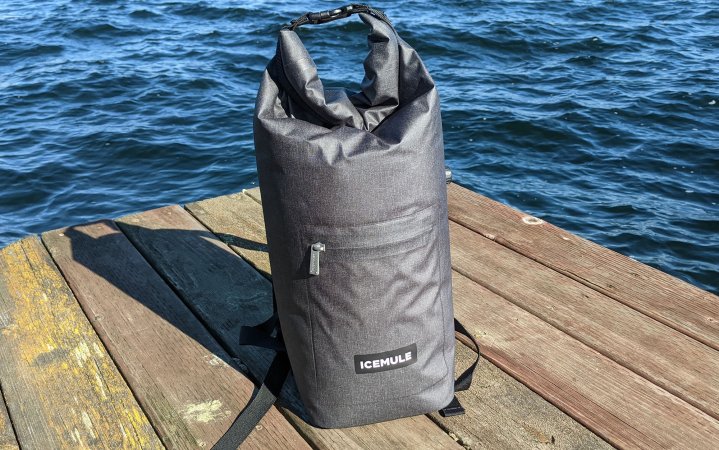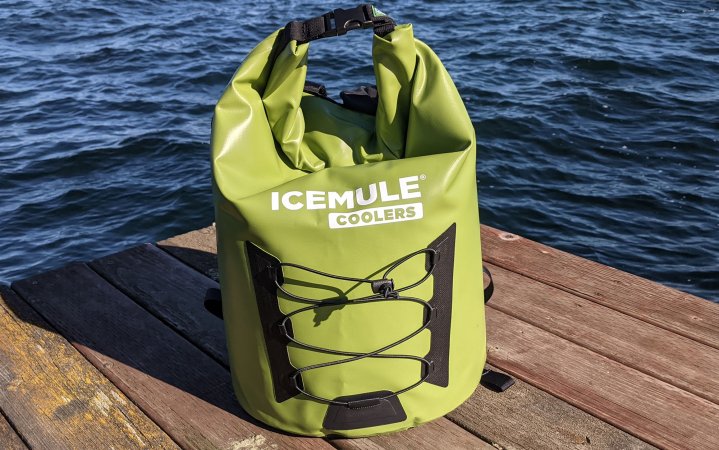We may earn revenue from the products available on this page and participate in affiliate programs. Learn More ›
The only thing better than cracking open a celebratory beer at the apex of an all-day peak bagging expedition is if said beer has been chilling in a backpack cooler. To help you find the right balance between comfort, weight, and insulation capabilities, I checked out models from RTIC, Yeti, Hydroflask, Otterbox, Monti, Brumate, and Icemule. After extensive testing, here are my picks for the best backpack coolers.
Best Overall: Hydroflask Day Escape
↓ Jump to Review
Best Upgrade: Yeti Hopper M20
↓ Jump to Review
Most Packable: Monti Shasta
↓ Jump to Review
Best Ice Retention: Brumate MagPack
↓ Jump to Review
Best Value: Otterbox Backpack Cooler
↓ Jump to Review
RTIC Soft Pack
↓ Jump to Review
Icemule Pro Large
↓ Jump to Review
| Backpack Cooler | Price | Weight | Closure | Capacity | Waterproof Test | Insulation Test | Carry Comfort |
|---|---|---|---|---|---|---|---|
| Brumate MagPack | $275 | 7.8 pounds | Zip closure | 20 liters | Yes | 62 hours | Great |
| Hydroflask Day Escape | $200 | 2.6 pounds | Zip closure | 20 liters | Yes | 37 hours | Great |
| Icemule Pro Large | $145 | 3.2 pounds | Roll top | 23 liters | No | 37 hours | Good |
| Icemule Jaunt Small | $90 | 1.5 pounds | Roll top | 9 liters | No | 56 hours | Good |
| Monti Shasta | $150 | .9 pound | Roll top | 23 liters | Yes | 55 hours | Good |
| Otterbox Backpack Cooler | $80 | 2.7 pounds | Zip closure | 18 liters | No | 42 hours | Great |
| RTIC Soft Pack | $190 | 3.7 pounds | Zip closure | 20 liters | Yes | 37 hours | Fair |
| Yeti Hopper M20 | $325 | 4.5 pounds | Magnet roll top | 20 liters | Yes | 55 hours | Good |
How I Tested the Best Backpack Coolers
Perhaps the most important test for a backpack cooler is its insulation. To assess this, I added a 5-pound bag of ice to each cooler and then left them in moderate temperatures (mid to upper sixties), checking every twenty-four hours to see whether or not the ice had melted. I recorded the time at which all that was left in the backpack was a puddle of water.

I looked at the waterproofing of each backpack cooler by tipping them in all directions and leaving the backpack coolers upside down for an hour. In addition, I also looked at the comfort and adjustability of each backpack. Finally, I took additional features, such as pockets or haul handles, and price into consideration.
I tested the ice retention of the backpack coolers in this test on two separate occasions, with the HydroFlask Day Escape being tested in both scenarios. Differences in ambient temperatures in my home resulted in different melt times for the coolers; as such, I have used the HydroFlask Day Escape as the control cooler for both scenarios and weighted the other coolers accordingly.
The Best Backpack Coolers: Reviews & Recommendations
Best Overall: Hydroflask Day Escape
Key Features
- Capacity: 20 liters
- Weight: 2.6 pounds
- Insulation Test: 48 hours
Pros
- Very comfortable to carry
- Waterproof
- Mesh pocket
Cons
- Not the best ice retention
The Hydroflask Day Escape has one of the most comfortable carries I’ve tested. This is what I would bring with me on a day hike, or really any carry longer than 50 yards. This is in large part due to its shape: It has a wider frame, with less depth, which holds the weight closer to your body than models that were free form or structured like a traditional cooler.
While the backpack had (just) enough structure to support a heavier load, the lack of hip belt means that you should resist the urge to fully load this one up before heading out on a longer hike. One feature common to backpacks but not to backpack coolers that the Day Escape included was a haul handle, which is handy for at-home storage.

In addition to being comfortable, the Hydroflask Day Escape also has all the hallmarks of one of the great backpack coolers, being fully waterproof and holding ice for 37 hours during my insulation test — not the longest in my test, but plenty for a picnic or day hike. I also liked that it had an outside mesh pocket — useful for stashing small items or needing somewhere to stick your trail beer on the go.
Best Upgrade: Yeti Hopper M20
Key Features
- Price: $325
- Capacity: 20 liters
- Ice Melt Test: 55 hours
Pros
- Great ice retention
- Excellent latch
- Waterproof
Cons
- Expensive
- Shoulder straps are a little stiff to start
Like with so many of their products, Yeti nailed nearly all the details on their Hopper M20 Backpack cooler, but at a cost. This one was over three times the price of my best value pick, and $100 more than my best overall pick.
Ice retention was excellent with the Yeti Hopper M20 backpack, tying for third in my test with the Monti Shasta. It also has an unusually excellent latching system. There are two buckles to tie down the roll-top opening for waterproof transport. But when you’re at the beach and your friends are going in and out of the backpack cooler for brews, you won’t have to worry that they forgot to close the cooler, because there is a magnetic closure that is super effective, closing securely with the slightest effort. Check and check. The only real ding (besides price) are the straps, which are a little stiff out of the box but I expect to soften up over time.
Most Packable: Monti Shasta
Key Features
- Price: $144
- Capacity: 23 liters
- Ice Melt Test: 55 hours
Pros
- Packs down very small
- Great ice retention
- Affordably priced
Cons
- Prone to condensation (although otherwise waterproof)
- Lack of structure means it’s easier to tip over and can have knobby bits when fully packed
- Sling style strap is less comfortable for long distances than traditional backpack straps
If you’re looking for a backpack cooler to save on space, then the Monti Shasta is the one for you. The exterior pocket doubles as a stuff sack for the rest of the cooler, which reduces the size down to 9 by 8 inches. Prior to testing I guessed this would negatively impact its performance in the ice retention test: not so. It was tied with the Yeti Hopper M20, taking 55 hours for 7 pounds of ice to melt. Even better: You have the option to use the rolltop to squeeze the excess air out of the backpack cooler when in transit, which should up its performance even more. This is a great, space-saving cooler with a unique design at a good price.

Laura Lancaster
After the first day of testing, I noticed some moisture on the exterior of the Monti Shasta. At first I thought it was leaking, but the limited amount of wetness over the course of two and a half days of testing suggests this was something else: condensation, a lot of condensation. Once you figure out what’s going on, it’s not a problem, but expect there to be a small wet spot wherever this cooler is sitting. Though, during testing, the zip and roll-top closure proved to be completely waterproof. It’s also worth noting that due to its design, this backpack cooler doesn’t have the structure of the other options in this story. It sits upright just fine, but will be more prone to tipping.
Best Ice Retention: Brumate MagPack
Key Features
- Price: $275
- Capacity: 20 liters
- Ice Melt Test: 62 hours
Pros
- Best-in-class ice retention
- Comfortable carry
Cons
- Latch is difficult to use
- Doesn’t pack down
- On the expensive side
If what you want is the backpack cooler that will keep your drinks the coldest the longest, then go for the Brumate MagPack. It held ice longer than anything else I looked at, over two a half days. It was also one of the most comfortable backpack coolers to carry for longer distances. The issue with the Brumate MagPack is that the latching mechanism doesn’t work as intended. Like the Yeti Hopper M20, it uses magnets to help create a seal.
Unfortunately, during testing it was difficult to get the magnet to click properly. I found that if I closed it too lightly, the seal would be loose (affecting not only ice retention but also waterproofness). To get a good, strong seal I had to slam the lid down. That’s pretty annoying, and I don’t think it should be the case for a cooler at this price point. But its best-in-class ice retention is sure to turn heads as it’s starting to compete with the capabilities of rotomolded hard coolers.
Best Value: Otterbox Backpack Cooler
Key Features
- Capacity: 18 liters
- Weight: 2.7 pounds
- Insulation Test: 42 hours
Pros
- Affordably priced
- Comfortable carry
Cons
- Not waterproof
- Not the best ice retention
The Otterbox Backpack Cooler is an affordably priced option that ticks most of the boxes. It’s comfortable to carry. It will keep your drinks cold all day long. I also liked that, like the RTIC Soft Pack and Brumate Magpack, its square frame made it easy to see inside of the cooler when it was open. And it managed that without having an overly rigid frame, so it still packed down reasonably well when not in use. The downside to that, however, was that ice retention was on the lower side of my test. This was also one of the few backpack coolers that leaked water when tipped upside down, due to a gap in the zipper pulls.
RTIC Soft Pack
Key Features
- Capacity: 20 liters
- Weight: 3.7 pounds
- Insulation Test: 37 hours
Pros
- Can be carried like a typical soft cooler or a backpack
- Easy to organize
Cons
- Less comfortable than other backpack coolers
- Bulky to store
If you’re on the fence about the need to own backpack coolers — plenty of both small coolers and the best camping coolers can be easily navigated short distances — then the RTIC Soft Pack Backpack Cooler is a great compromise. It has both the convenience of a backpack cooler and the easy-to-use structure of a typical soft cooler, including haul handles. While other backpack coolers I looked at were relatively freeform, expanding or shrinking in size depending on what you put in them, the RTIC is very structured. However you put your beverages into the cooler, they are likely to stay that way.

While that made items relatively easy to find during testing, it made actually carrying the cooler less comfortable than with other models. This is because the weight of the RTIC Soft Pack, which can be pretty significant if you load it up, is held further away from your body, putting additional pressure onto your shoulders and potentially offsetting your balance.
Icemule Jaunt (Small)
Key Features
- Capacity: 9 liters
- Weight: 1.5 pounds
- Insulation Test: 56 hours
Pros
- Affordable
- Lightweight
- Roll-top minimizes space during storage
- Zip pocket at front
- Great insulation
Cons
- No padding at the back panel
- Not fully waterproof
If you’re hiking in hotter climes, odds are you’re looking for something between a backpack and a backpack cooler to help keep your lunch and snacks for the day at a reasonable temperature. That’s what the Icemule Jaunt is. It’s small; it’s affordable. It’s not flashy. But it has great ice retention (one of the best of my test, lasting 56 hours) and has plenty of space for drinks and food for two people. It also packs down small thanks to the inflatable insulation, the roll-top closure, and the lack of formal structure.

While the Jaunt does have a zip pocket at the front, it would benefit from a few more storage pockets on the side to hold other hiking essentials. Since it lacks an internal structure or padding on the back side, this one is also going to need a bit more care in packing to make sure there isn’t something poking into your back en route. The roll-top style also turned out to be less waterproof than the zip models, leaking water when left upside down for more than a few seconds.
Icemule Pro (Large)
Key Features
- Capacity: 23 liters
- Weight: 3.2 pounds
- Insulation Test: 37 hours
Pros
- Large capacity for the price
- Padded back panel
- Roll top closure
Cons
- Less comfortable to carry
While Icemule (rightly) gets plenty of accolades for their Boss model—the only backpack cooler I’ve run across that actually looks like a day pack—don’t overlook the Icemule Pro, which provides plenty of insulation at a third of the price. It held ice for 48 hours—more than enough time for weekend camping or boating adventures. Like the Icemule Jaunt, it wasn’t fully waterproof, so be careful to carry and store this cooler upright, especially when the icemelt starts to accumulate.

While I wish that the Icemule Pro had a substantial hipbelt to help when carrying larger, heavier loads, which the capacity of the Pro supports, it does have padding along the back panel, which helps to alleviate the load for shorter distances. Despite its oversize appearance, the Icemule Pro also packs down surprisingly small, thanks to the roll-top closure and deflatable insulation.
How to Choose the Best Backpack Cooler
Weight of the Best Backpack Coolers
While weight can mean the difference between having a pleasant dayhike and a true sufferfest, the majority of the weight of a backpack cooler is in its contents, rather than the weight of the backpack cooler itself—remember, a liter of water weighs 2.5 pounds. If weight is a major concern, look at chilling your beverages before you add them to your backpack to save on ice weight.
Capacity of the Best Backpack Coolers
The larger the capacity of your backpack cooler, the more ice you’ll need to keep the same area cool. Choose a smaller capacity if you’ll be carrying beverages for yourself and a couple of friends, while larger backpack coolers can be handy if you’re planning an all-day hang at the beach.
Waterproofness of the Best Backpack Coolers
More likely than not, your backpack cooler will be full of ice (rather than one of the best ice packs for coolers), which, as it melts, can make a huge mess if you’re not careful to place it upright. Look for a backpack cooler that is fully waterproof to ensure that the rest of your gear stays dry.
Comfort of the Best Backpack Coolers
If you’re looking to purchase a backpack cooler, more often than not you’re planning to hoof more than 20 yards between your car and the picnic table. While none of the backpack coolers had the waistbelts or structure that provide the load-bearing capacity of backpacking backpacks, there were noticeable differences in the level of cushion and adjustability to take into consideration before making a purchase.
Read Next: Best Coolers with Wheels
FAQs
Look for backpack coolers from top cooler manufacturers, like Yeti, RTIC, Igloo, and Icemule, to ensure you get best-in-class insulation for your ice, cold packs, and beverages.
Yes, you can put ice into a backpack cooler as long as it’s waterproof.
To clean and store your backpack cooler, first ensure it is clean and free of any spills or sticky spots, using a mild detergent where necessary. Next, wipe down the interior until it is completely dry. Finally close the lid but do not fully zip it, to avoid unwanted odors building up on the inside of your backpack cooler during the down season.
While backpack coolers are not in and of themselves especially heavy, the weight of both ice and cans quickly adds up. Further, none of the backpack coolers I looked at had the load-bearing capacity of the best backpacks. If weight is a primary consideration for your backpack cooler, it may be best to look at a wheeled version of one of the best camping coolers.
Final Thoughts on the Best Backpack Coolers
A great backpack cooler can take a fun weekend adventure and turn it up a notch, making it something truly memorable. The below picks for the best backpack coolers are all great choices for your next trip outdoors.
- Best Overall: Hydroflask Day Escape
- Best Upgrade: Yeti Hopper M20
- Most Packable: Monti Shasta
- Best Ice Retention: Brumate MagPack
- Best Value: Otterbox Backpack Cooler
- RTIC Soft Pack
- Icemule Jaunt
- Icemule Pro Large

